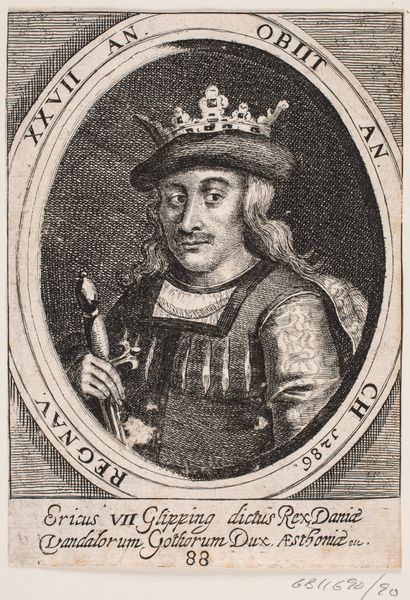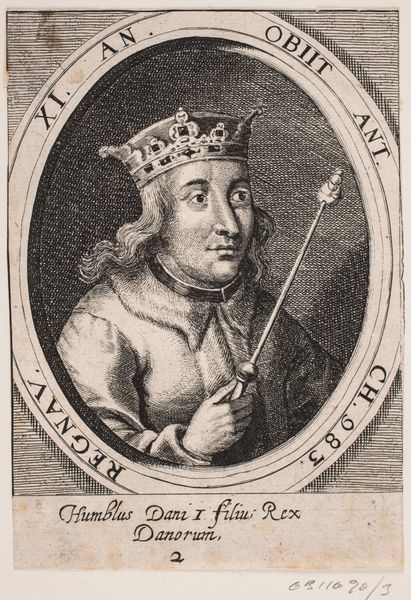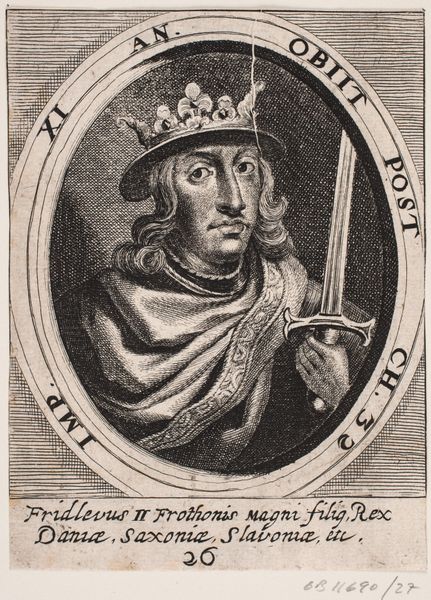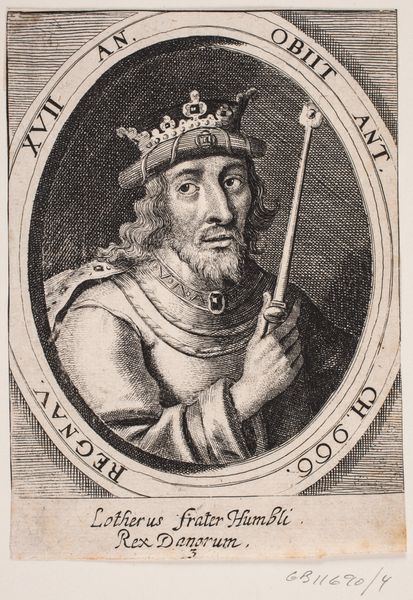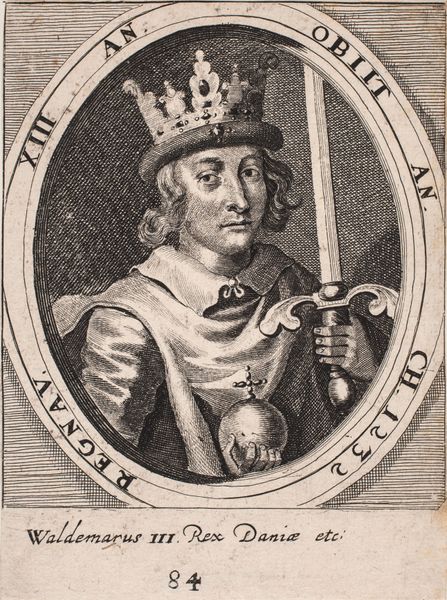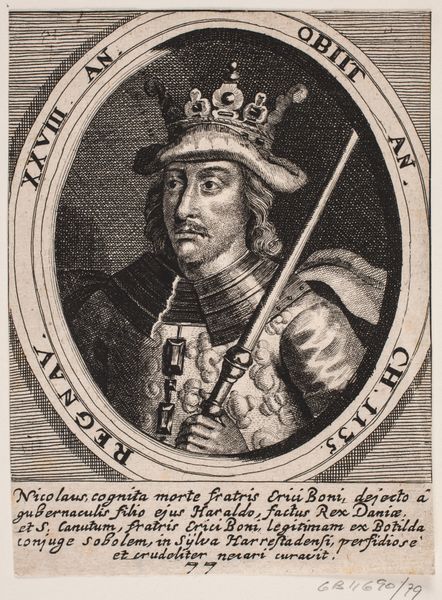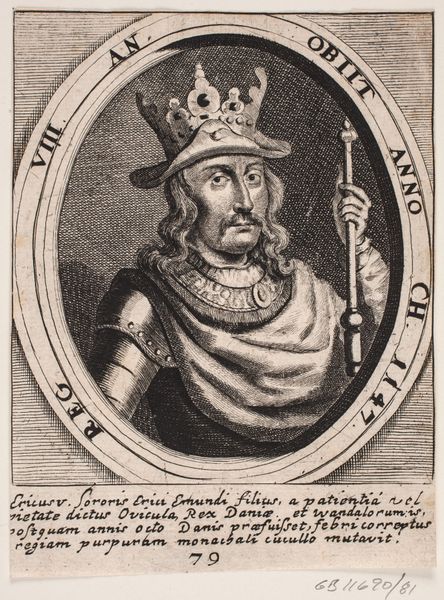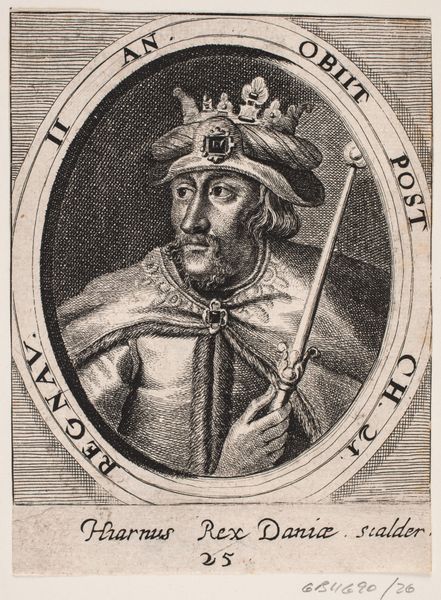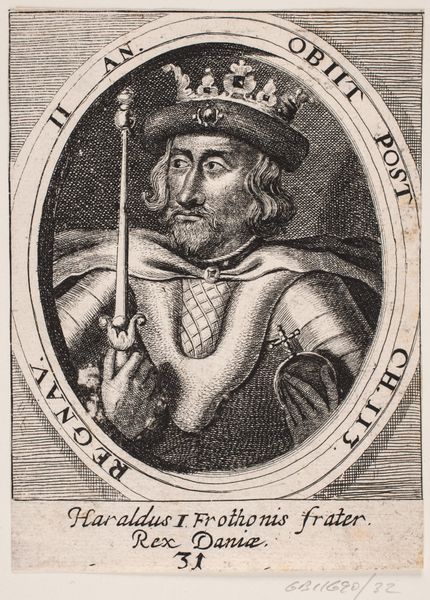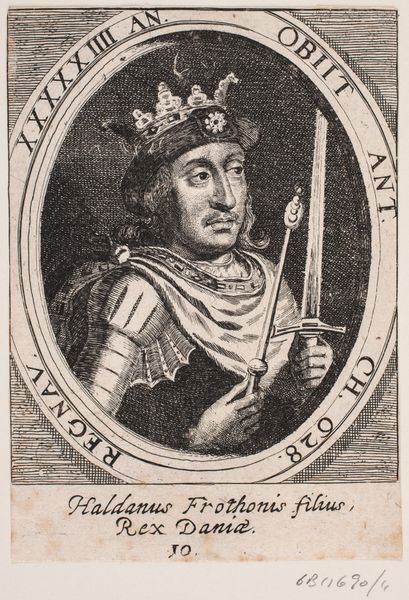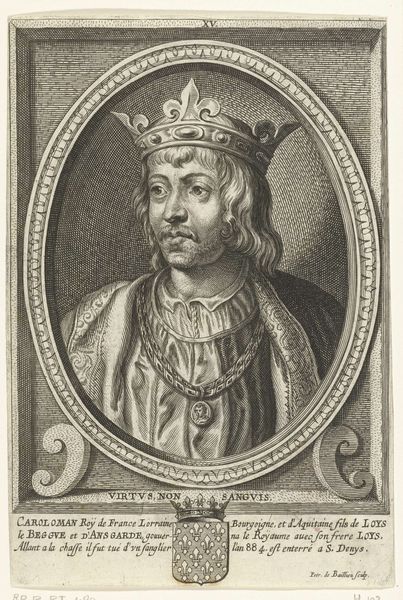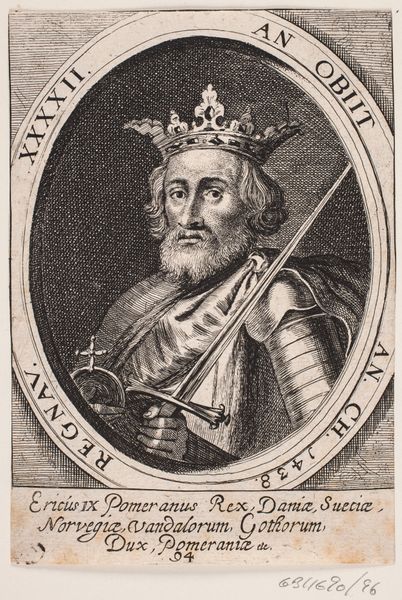
print, metal, engraving
#
portrait
#
baroque
# print
#
metal
#
old engraving style
#
19th century
#
portrait drawing
#
history-painting
#
engraving
Dimensions: 140 mm (height) x 100 mm (width) (bladmaal)
Curator: We’re looking at a print from 1646, titled "Christoffer II." It's an engraving, probably on a metal plate, and is currently held at the SMK, the National Gallery of Denmark. It depicts, as the name suggests, the Danish king, Christopher II. Editor: My first thought is, wow, that crown looks heavy. And is he holding a really skinny sword or like...a letter opener? It’s got that severe formality of the era, but there’s something almost comical about the disproportion of everything. Curator: Yes, that oval format and the dense inscription create a frame around his image that is indeed typical of the period. Remember, portraiture back then served specific symbolic functions. Consider the sword, often representing justice and royal authority—even if it does appear somewhat... miniature here. Editor: Well, symbols often are compacted distillations of larger ideas. Looking at his face, though, he seems burdened, not particularly regal. More like he's doing his duty but wishing he were somewhere else, maybe not wearing that crown! There's an almost… reluctant quality to his expression. Curator: That reluctance, perhaps, tells a larger historical narrative. His reign was tumultuous, marked by internal strife and diminishing royal power. So even in this formal depiction, perhaps we are seeing a reflection of a troubled king, subtly encoded within established iconographic conventions. His eyes, especially, seem downcast and somewhat wary. Editor: Exactly! And even the choice to represent him in what looks like everyday clothing, under the armor, instead of a full ceremonial outfit. Is that about accessibility? I almost feel like he’s speaking to the masses as much as he is to the traditionalists who read all those labels circling his image. There’s an immediacy I don’t typically expect from this era. Curator: That’s astute. Perhaps this choice implies humility or an attempt to identify with his subjects during difficult times. And note the inscription which refers to his reign in Latin and his titles which were important for reinforcing claims to authority and historical legitimacy. Each element acts as a signifier carefully layered with cultural memory. Editor: Fascinating how a seemingly straightforward portrait opens up so many layers. From seemingly wonky composition, to questions of power, to a surprisingly human expression. Art continues to trick me like that; you come for one thing and stay for an entire historical saga. Curator: Precisely, a single image can act as a portal connecting us not only to the aesthetics but the beliefs, anxieties, and power dynamics of a bygone age.
Comments
No comments
Be the first to comment and join the conversation on the ultimate creative platform.
